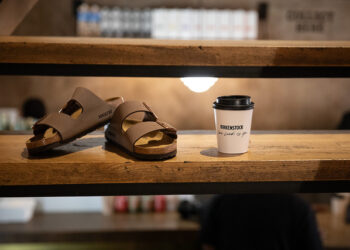Recently, Gauteng police arrested two suspects who were allegedly found selling knockoffs of designer brands like Gucci and Chanel, valued at over R6 million. While most consumers think they’re pretty good at identifying counterfeits, 70%have unknowingly bought a fake.
“South Africa has become a hotspot for ‘triple A-grade’ fakes – replicas of luxury items that are quite difficult to distinguish from the original,” says Michael Zahariev, co-founder of luxury reseller and authenticator, Luxity. “These look so much like the genuine article that even a brand enthusiast would struggle to tell the difference. It’s one of the reasons why Luxity double authenticates every item we buy with both an in-house authenticator and a third party. Unfortunately, shoppers are easily fooled by these fakes as scams are becoming increasingly sophisticated.”
Here are seven red flags to look out for to avoid becoming a victim of the country’s counterfeiters:
1. No returns or exchanges: Swindlers don’t allow these – a sure sign that their items are fake.
2. If the price is too good to be true, it probably is: While the prices of triple A-grade’ fakes might not be as high as the genuine item, they’re high enough to make someone believe that they’re still forking out a significant amount for what could be an original. Often, shoppers will be fed a story about why it’s a bit cheaper. Counterfeits generally resell for up to 35% of the original price, although there are exceptions, with some sophisticated counterfeiters charging up to 80%.
3. Pre-owned posers: Some scammers will try pass items off as pre-owned to explain the lower price. Make sure to look up reviews on the company to ensure that it’s a legitimate business, and not just a fly-by-night operation.
4. No website or physical address: As most of these sellers deal directly with customers through WhatsApp or social media, if a product is fake, buyers have little recourse when it comes to querying its authenticity or reporting the fraudsters to the authorities.
5. Waiting lists: A number of counterfeiters will tell customers that there’s a two- or three-week waiting list. But this is because they’re importing items from China on order and not from Chanel, like buyers are told.
6. So-called private shoppers: One way that criminals convince people to part with their cash is by telling them that they will be going overseas and will buy the desired product for them. The “shopper”, and the money, are never seen again, or they return with a counterfeit.
7. 2 Minute details: In the past, a common way to catch counterfeits was by checking the material and stitching on an item, but this is no longer the case as crooks have gotten better and better over time at getting this right. Nowadays, to the untrained eye it can be close to impossible to tell if an item is counterfeit or not.


































